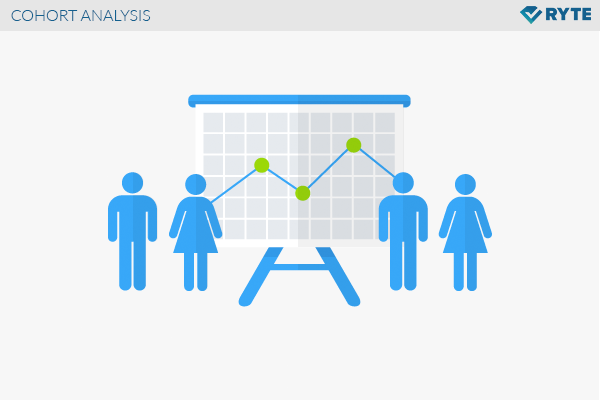Cohort Analysis
Cohort analysis originated in population science. It is a method to analyze and evaluate changes in the behavior of a group of people with a common demographic feature in a given period of time. Currently, cohort analyzes are used in different scientific fields, including economic sociology. Depending on the definition, cohort analysis may also be referred to as longitudinal study.
History and background
Whelpton, a population scientist, was the first to conduct a cohort analysis or longitudinal study under this name in 1949. His goal was to analyze with this method the increased birth rate after the Second World War in the United States. Bore that, Nazi researchers used this process to classify the efficiency of the regime’s population policy. The aim of this study was to determine the relation between rising birth rates and the distance between individual births.
Today, this method is applied both in medical research, including pharmacogenetics and in economics, specifically market research for example to analyze differences in user behavior.
Cohort
The original definition of a cohort is a group of people that have a similar demographic characteristic. This may be, for example, the year of birth, the decade they were born, or the time they entered a certain grade in school. In a cohort analysis several cohorts can also be comparatively observed.
Types
Generally, cohort analyses or studies can be divided into three different types. There is actually no uniform definition for this method.
- The first type of cohort study is a study where the cohort is analyzed more than once over a longer period of time. In this case, it can also be called a longitudinal study.
- The second type of cohort study refers to an analysis that is based on independently conducted sampling from a cohort at different times.
- The third type refers to studies of several cohorts at different times.
The second type is often used in economy. Next age groups are established in relation to the demand for a particular product or brand. These groups are finally examined at different time intervals.
Possible key aspects of the study
“Cohort effects” is a term often used if a cohort is characterized by certain behavior. For example, there may be a difference if a consumer group of the same age is analyzed in different years. In this case, the individual cohorts may have developed purchasing styles specific for their group. Such differences can be identified by means of a cohort analysis.
Age effects
In a cohort analysis, age effects can often also be identified. This specifically refers to changes in habits that can be attributed to the higher age of the consumers and the associated changes in attitude. For example, having children, a wedding, or purchasing a home can significantly change consumer behavior of a cohort.
Period effects
“Period effects” denotes influences which develop independent of generation and sociodemographic factors. It may, for example, be due to the introduction of new technical devices such as smartphones or technologies such as the Internet.
Use for online marketing
Cohort analyses provide the basis for decisions in marketing in general or online marketing in particular. Some analyses can be easily generated based on common tools such as Google Analytics. One aim of these studies may be to find out more about customer relations.
The existing data on websites can be examined even over longer periods of time due to segmentation. Therefore it is possible to make statements about the buying behavior of visitors from a specific geographic region (if it exists). Moreover, buying behavior can be analyzed during marketing campaigns. For example, it is possible to find out whether repeat visitors or new visitors buy more frequently in an online shop. For larger-scale cohort analysis in online marketing, data from multiple sources can be merged to “Big Data” to achieve more relevant results.
Example
Online shops may be able to determine how often existing online customers of a certain age or a determined region have taken advantage of offers using a cohort analysis.
After evaluating the data, the online shop can, for example, adjust their marketing efforts by targeting the existing customers who have bought only once from the shop in the time period that was analyzed.
Alternately, these groups can also be addressed as part of a customer survey to find out the exact reasons for the lack of buying.
The benefit of a cohort analysis in online marketing is that much of the data is already available and can be segmented using cohorts. Because of its digital nature, each access source or each touch point can be detected and evaluated. Even a simple log file helps to create cohorts out of visitors who have accessed the website within a defined period and with a specific browser. Concurrently, cohort analysis can also be applied to keyword rankings or visibility developments.
In addition to current web analytics tools, a cohort analysis may also help to link different records and analyze them. Thus, new customers or target groups can be created for targeting or retargeting campaigns. Important in all analyses, however, is that privacy is maintained at all times and sensitive data is rendered anonymous when merging the data.

